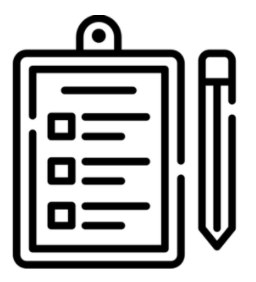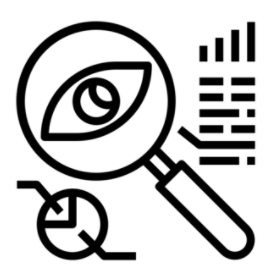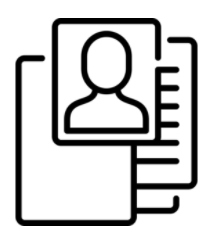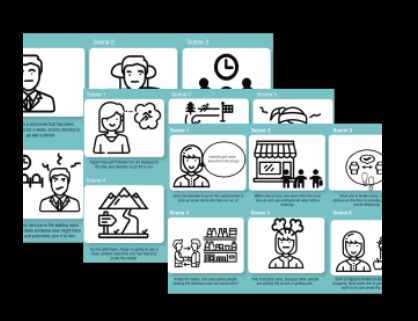INNOVIRAL
Timeline - 12 Weeks
Role: User Researcher, UX/UI Designer, Interaction Designer and Video Editor
Tools: Adobe Illustrator, Adobe Premier Pro, Miro, Adobe Photoshop, Figma, Blender, Adobe Dimension and Adobe After Effects
Team: Olivia Morley / Mietta Reed / Sharon Jia / Eric Doh
Innoviral is an innovative start-up project, combining my design and business knowledge. Innoviral was an innovative business project that was curated during my third year of study at the University of Sydney through the subject Innovative Design Studio (DECO3101). This was a multi-disciplinary group of two designers, and two business students.
Innoviral designed a band and mobile application that assists in creating transparency and mitigating contagious behaviours for housemates during the Coronavirus (COVID-19) outbreak.
OVERVIEW OF THE PROCESS
PROCESS IN NUMBERS
-
90+
Users Reached in Research/Testing
-
40+
Testing
Walkthroughs
-
9
Evaluative Testing Methods Used
DESIGN PROCESS & CONCEPT VIDEO
DISCOVER
OVERVIEW
For our project, we targeted the problems millions of Australians are experiencing whilst living in shared housing during the COVID-19 outbreak. Due to poor communication between housemates’ daily movements, there is a lack of trust, fear, and even resentment that has been fostering in Australian share-houses all over the country. Housemates are afraid to visit their parents or extended family and friends because they do not know how well their housemates have been following the social distancing guidelines. This holds a serious potential to create a negative environment between housemates. Through my user research, I wanted to understand people’s attitudes, motivations and knowledge of social distancing in order to gain a better insight into how I can develop a product which reduces the stress and miscommunication our users where having within their environments. This project focused on the value, market and cost of a product.
RESEARCH METHODS
-
USER/MARKET SEGMENTATION

-
ONLINE QUESTIONNAIRE
-
STAKEHOLDER MAPPING
-
EXISTING PRODUCTS
-
CONTEXTUAL OBSERVATIONS
SYNTHESIS METHODS
-
INSIGHTS
-
PERSONAS
-
STORYBOARDS
-
AFFINITY DIAGRAMS
-
DECISION MATRIX
-
WIREFRAMING
UX/UI PRINCIPLES
BE RELIABLE- Have accurate tracking of housemates not false data
MANAGE EXPECTATIONS- If there are changes in my housemates routine or if they are in contact with others so I can altar my communication with my housemates
VALUE ME- Some form of reward for social distancing making a less stressful place in a home environment
AESTHETIC & MINIMALIST DESIGN- To make something that is aesthetically pleasing and has a minimalist design
USER CONTROL & FREEDOM- To create a product where the user has freedom and choice when using the product and application
MATCH BETWEEN SYSTEM & REAL WORLD- To construct and design a product and web-interface of which can be used in the real world to aid those during COVID-19.
REFRAMING THE PROBLEM
HOW TO MITIGATE CONTAGIOUS BEHAVIOURS AT A PERSONAL AND PUBLIC LEVEL
DESIGN
OVERVIEW
We began to research and ideating a number of concepts that reflect our target market. Market and user segmentation was established allowing for initial brainstorming ideas to be explored than refined. We felt that each person within our group will make eight ideas both physical and interface products as a basic level of ideation. We then narrowed in on a selected few creating storyboards, competitor analysis, personas and decision matrices highlighting the strongest design choice.
Initial Research
Our initial research into the problem area centralised around several topic areas that would provide a holistic view of the current situation and how our business idea could successfully launch. By collating broad research into the problem area of COVID-19, we have been able to understand how different countries have responded to the virus through policymaking and innovation. This provided a strong overview of how our product and business will need to be able to adapt rapidly, as COVID-19 evolves. We also conducted research into existing stakeholders, user disruptors, organization disruptors, existing products and future predictions of the outbreak. Through this provided information, a broad target market was able to be identified.
Stakeholder Mapping
Due to the nature of this viral disease, CORE stakeholders include everyone. Meaning that all human stakeholders are responsible for mitigating the contagious behaviours and collectively bear the consequences. However, out of these stakeholders, specific roles may differ in the efforts to reduce the effects of COVID-19. People in lockdown, self-quarantine and remote workers are the largest portion of the population and people who are most affected and therefore listed as a CORE stakeholder. Whereas, authorities like public health professionals, police, and the government are DIRECT stakeholders as their decisions have strong influence on the actions that the CORE stakeholders need to take. Plus, retail workers and neighbours also serve as people that allow the community for CORE stakeholders to continue their livelihood. First indirect stakeholders include healthcare workers as the healthcare system depends on their capacity. Their decisions do not directly affect CORE stakeholders unless they have been related to the COVID infections.
CONCEPT EXPLORATION
Innoviral — A physical bracelet and application interface to help notify and hold those accountable to social distancing regulations
Grocery Shop Entry Monitor — A physical device attached on in-store scanners keeping track of how many people are within a store
Government Public Device — A device allowing alerts to be sent to the public of cases within certain areas.
Essential Service Business App — A device and application that will monitor public areas/storefront/offices to see how busy they are to help maintain social distancing guidelines.
-
PERSONAS
-
DECISION MATRICES
-
STORYBOARDS
OVERVIEW OF PROTOTYPE DESIGNS
APPLICATION WIREFRAME
PHYSICAL PRODUCT SKETCHES
REFLECTION
This was our initial round of ideation sketching for both screens and for the physical product. In order to gain more insight within these design sketches, discussions and tests where undertaken to determine the best features amongst these ideas. With the best features and ideas explored, a table was constructed to outline features that have the possibility to be included within our final design.
LOW-FIDELITY PROTOTYPE
REFLECTION
Our Low-Fidelity prototype where constructed and presented to our users. With rounds of think aloud testing, our users where able to provide feedback and ideas in which our concept can gain a higher level of flow between interfaces and a more reliable and valid design for our physical product. After synthesising the results from our think-aloud testing we decided to continue with certain features for the interfaces within our Application focusing more on the ‘ISO Score’ and ‘Heat Map’ designs as catalyst in individuality for our product. In addition to this, our physical product gained pain points focusing on the ergonomics of a hand while also keeping a minimalistic and sleek design in mind.
MID-FIDELITY PROTOTYPE
REFLECTION
Within this round of prototyping, we scaled up from paper prototypes and wireframes to digital prototypes using the program Figma. As we iterated the design, we focused on minimal, clear and flow between interfaces. The process of adding colour aided in further user testing especially in our think-aloud testing. We focused on the unique aspect of our product by adding more detail within the interfaces for ‘Map Tracking’ and ‘Housemate’ feature. Another aspect that was well liked from our users was that our linking between our physical product and our application was clear and easy to understand.
HI-FIDELITY PROTOTYPE
REFLECTION
Innoviral Application and Bracelet was built to meet user needs and to reduce the miscommunication between housemates during the COVID-19 pandemic. Using a holistic and iterative design process, we were able to produce two products that allows for the tracking of users and a tool in which they can utilise contagious behaviour.
VALUE PROPOSITION
The Innoviral value proposition has been curated through extensive research into our target audience and our surrounding competitors. The visualisation depicts how our products and services meet our customer needs from a business perspective.
SUMMARY OF THE VALUE PROPOSITION
COST & REVENUE
While our company provides both an app and a wristband for mitigating behaviours for COVID-19, our major business driver will be our wristband product for shared households. Below, we’ve detailed our plans for the cost, revenue, and profits gained from each product sold. With the low cost of manufacturing our product, we will be able to generate a large profit margin while simultaneously keeping our product at a low price point.
Initial Users Net Profit: $20K
Our free mobile app will drive customer loyalty and trust with its effective features, and will encourage users to buy our product, which will enhance their app usage. We plan to gain traction of 1000 users in Australian shared households within our first month of launch, bringing in 20K in total revenue and 12K in net profit from selling our wristbands at a market price of $20/band.
TAM (Total Addressable Market): $190M
According to the Australian government, 76% of the Australian population lives in a shared household, with over 6 million households (“Household in Australia Source Data”, 2020). With an average of 2.6 people per shared household, this means our total addressable market would be 15.6M people. If every addressable user bought our product, we would be looking at a revenue of $312M, generating a net profit of $190M.
SAM: (Serviceable Available Market): $16M
In Australia, there are currently 321K group households, excluding family households living in shared housing (“Household in Australia Source Data”, 2020). With an average of 2.6 people per shared household, this means our serviceable available market would be 834K people. If every serviceable user bought our product, we would be looking at a revenue of $16M, generating a net profit of $10M.
Government/University Funding Programs: $1M
Researchers from the University of Sydney lead several projects recently announced by the Australian Government as part of its national coordinated COVID-19 research response. Professor Patrick Brennan from the School of Health Sciences and Professor Stuart Grieve from the Charles Perkins Centre and School of Health Sciences, have been awarded $1.042 million from the Medical Research Future Fund (MRFF). We would be able to apply for funding from programs such as the Medical Research Future Fund (MRFF) for up to $1M in funding for COVID-19.






























